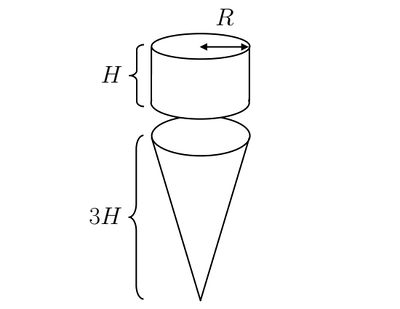Science:Math Exam Resources/Courses/MATH 180/December 2017/Question 08 (b)
{{#incat:MER QGQ flag|{{#incat:MER QGH flag|{{#incat:MER QGS flag|}}}}}}
• Q1 (a) • Q1 (b) • Q1 (c) • Q2 (a) • Q2 (b) • Q2 (c) • Q3 (a) • Q3 (b) • Q3 (c) • Q4 (a) • Q4 (b) • Q4 (c) • Q5 (a) • Q5 (b) • Q5 (c) • Q6 • Q7 • Q8 (a) • Q8 (b) • Q9 (a) • Q9 (b) • Q9 (c) • Q10 (a) • Q10 (b) • Q10 (c) • Q11 (a) • Q11 (b) • Q11 (c) • Q11 (d) • Q11 (e) • Q12 (a) • Q12 (b) • Q13 (a) • Q13 (b) • Q13 (c) • Q13 (d) •
|
Make sure you understand the problem fully: What is the question asking you to do? Are there specific conditions or constraints that you should take note of? How will you know if your answer is correct from your work only? Can you rephrase the question in your own words in a way that makes sense to you? |
|
If you are stuck, check the hint below. Consider it for a while. Does it give you a new idea on how to approach the problem? If so, try it! |
Hint |
|---|
|
Find the rate of decrease of water depth in the top tank, using the constant change rate of the volume of the water. |
|
Checking a solution serves two purposes: helping you if, after having used the hint, you still are stuck on the problem; or if you have solved the problem and would like to check your work.
|
Solution |
|---|
|
Let be the water depth in the top tank at time . Then, the volume of the water in the top tank at is given by (the volume of the cylinder with radius and height ). According to the question, the volume of water in the top tank is decreasing with the constant rate . In other words, the rate of decrease of the volume of water in the top tank is equal to . Here, we put the minus sign to describe the rate of decrease. Then, we have
The second equality follows from that and are constants and not depending on . Also, since is the water depth in the top tank at time , can be interpreted as the rate of decrease of water depth in the top tank. The minus sign again represents the rate of decrease. Observe that is the constant Compared with the rate of increase of water depth in the bottom tank at the time specified in part (a), which is (see part (a)), the rate of decrease of water depth in the top tank, , is that. In other words,
|
{{#incat:MER CT flag||
}}


















